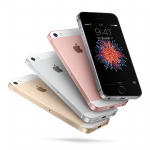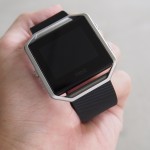After years of technology trials, Singapore commuters will finally get to tap their phones on a contactless reader at train stations and on buses to pay for their rides.
Instead of using their ez-link cards, they can use their phones, which they have in their hands all the time anyway. Doesn’t sound like a big deal? Well, this means one less thing to bring along.
More importantly, they could also easily top-up the stored value via the EZ-Link phone app, so they don’t have to go to the station and join the queue. Plus, they can check their balance easily.
Back in 2007, still a reporter with The Straits Times, I had tapped out at train stations with a prototype phone that was being tested with StarHub. I even paid for a burger at McDonald’s to the astonishment of the cashier, during one of the many trials over the years.
Today, the difference is the number of phones supported. Though the range is still rather narrow at 19 today, according to the announcement today, the support is expected to widen with NFC (near-field communications) technology embedded in more devices in the years ahead.
The original plan was to get this tap-and-pay option for smartphones up by 2013, but a trial on trains only started in August 2014 and was extended to buses in September 2015.
Better late than never, you can say, to catch up with countries like Japan, where people have been paying with their phones for more than a decade.
Another thing that finally got pushed through in Singapore this time is the cooperation of all three telecom operators.
Over the years, all of them have run their mobile payment trials, not just with EZ-Link, a company owned by the Land Transport Authority (LTA), but also rival NETS that is run by the big banks here.
This time, Singtel, StarHub and M1 all have nicely fallen in line to offer the necessary SIM cards that you need to use the new service. You’ll also have to turn on the NFC function on a compatible phone.
The bad news is you have to pay for this new SIM. M1 is charging S$37.45 for this. StarHub as well, but is happy to let you pay less – S$26.75 – if you are replacing your SIM. Singtel said it would charge prevailing SIM card rates.
The amount may not seem big when you are buying a new phone and need to change to a smaller SIM card.
But having to pay an extra S$30 for some convenience on a train ride may put off some commuters. Why not use that S$30 to top up your existing ez-link card?
This is where the LTA and EZ-Link surely could have made things more attractive to users. Could they not have worked with the telcos to offset part of the cost of switching over?
The local authorities should also be clear where this Singapore-based standard stands. Using the locally developed CePAS (Contactless e-Purse Application) technology, it faces competition from other payment options.
There are a few other mobile payment services coming online in Singapore soon. All promise to turn your smartphone used mainly for WhatsApp and YouTube now into a mobile wallet this year.
Apple Pay, for example, will work with American Express credit cards in Singapore. Samsung Pay will accept those issued by DBS Bank, OCBC Bank, Standard Chartered Bank and American Express.
Would consumers end up confused? Well, EZ-Link will be betting that you’d use its system since you likely have to take a train or bus at some point in Singapore. And it doesn’t require a credit card, unlike Samsung and Apple.
Whether it will be the most common – or successful – mobile wallet remains to be seen. In the mobile payment world, everyone still thinks he owns the customer.
In making all the noise, the bank, telco and phone maker could all make things even more confusing for a user. If a mobile wallet is so newfangled and hard to understand, would it be easier to just pull out the cash? It’s still legal tender, right?






